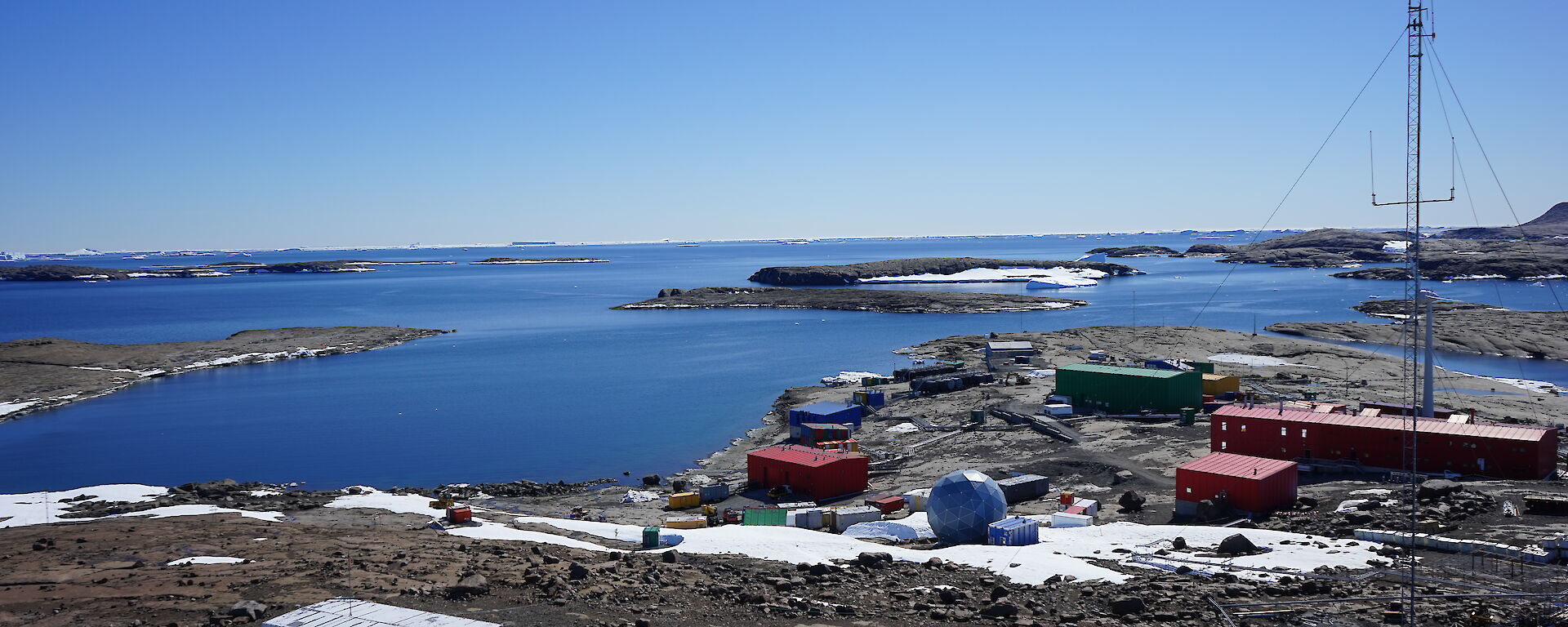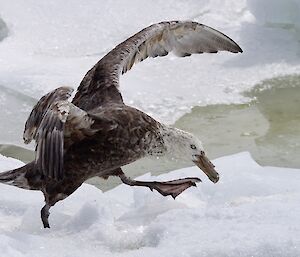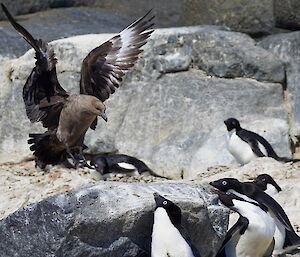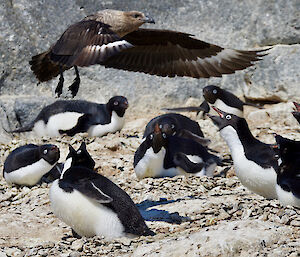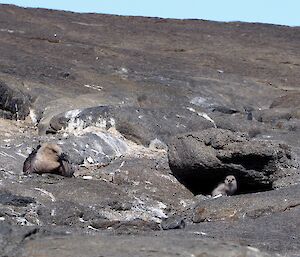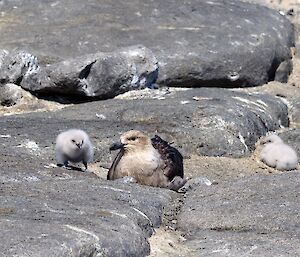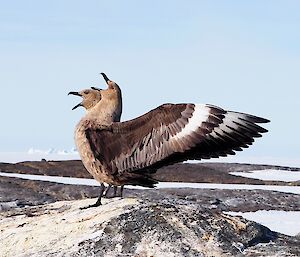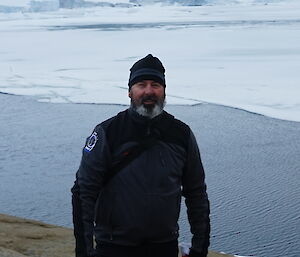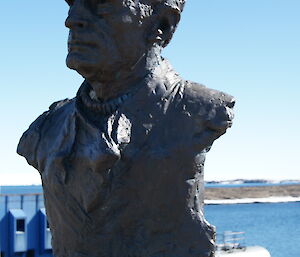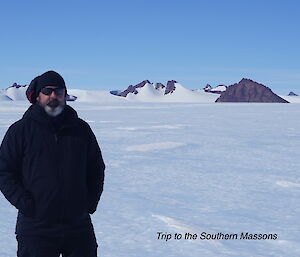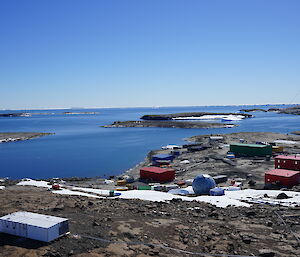Skuas have a reputation for being fierce and aggressive, ‘the scavengers of the south’. They feed on carrion, as well as fish and krill, and are often seen predating on penguin eggs and chicks — not penguins! Many people don’t like them too much, perhaps because they’ve fallen for the endearing penguins! We (Kim Kliska and I) are also quite fond of penguins, but we have a deep respect for skuas. Here’s why.
The skuas that are here at Béchervaise Island are south polar skuas — one of the seven species of skua. They are amazing fliers! Yes they swoop down on to unsuspecting penguins to try and nab an egg or chick (to feed their chicks), but they also fend off other skuas from their territory (where they nest and feed) and are incredibly agile — flying and landing with amazing precision. Sometimes we hear a skua chasing another skua through the air — it sounds like a small jet plane has just flown overhead! The speed and maneuverability is quite amazing — exceeding 72km per hour in pursuit flights (according to research by Alerstam et al. 1993 — https://royalsocietypublishing.org/doi/abs/10.1098/rstb.1993.0048).
They are also extremely diligent parents. They have to be — they are vulnerable to dangers too! The male and female work together to incubate their eggs and raise one or two chicks. The pair often call and pose to each other (head bows, spread wings), and have quite a vocal repertoire — sometimes a low murmur (like a talking kind of tone, to their partner or chick), sometimes a laughing kind of call (not like a kookaburra, more like a ‘ha ha haaa’ sort of laugh), and other times a high pitch screech (like they’re yelling — probably making sure other skuas get the message to rack off!).
This year we are attaching tracking devices to the skuas at Mawson to identify their summer and winter movements. To do this, we need to locate birds on a nest, so we know they are tied to a location, which we can go back to in order to recapture them and recover the device. Then we capture a bird, attach the device, release them, and off they go. We recapture them after a few days (for summer movements) or after one year (for winter movements). We use different devices for different movement data. We also record how many eggs they lay and how many chicks are successfully raised (to calculate breeding success — a good indicator of food availability throughout the season).
Working this closely with the skuas means we get to know them quite well, especially because we are working with known individuals and observing them frequently through time. Many people (biologists and wildlife enthusiasts) who observe animals this closely will tell you that from these observations it often becomes apparent that individuals have unique characteristics, or personalities — some skuas appear to be much more aggressive than others, some seem to push the territorial boundaries more than others, some are much more diligent to their nest and chicks than others. I think when you start to appreciate this diversity of behaviour in skuas, then you start to look beyond the penguin-eating and open your eyes to the world of a very impressive predatory bird.
The skuas on Béchervaise Island are certainly the dominant predator in the area, but we do occasional see southern giant petrels (SGP) too (a small number breed not too far from here). The ‘SGPs’ are quite impressive — not only do they look like something out of Jurassic Park, they also sound how you’d imagine a Pterodactyl to call. If you want to learn more about SGPs and or one of the other skua species (the brown skua), head over the Macquarie Island station updates page — they also have quite a few stories to tell about the birds they have there!
- Marcus Salton (AAD Vertebrate Biologist)

